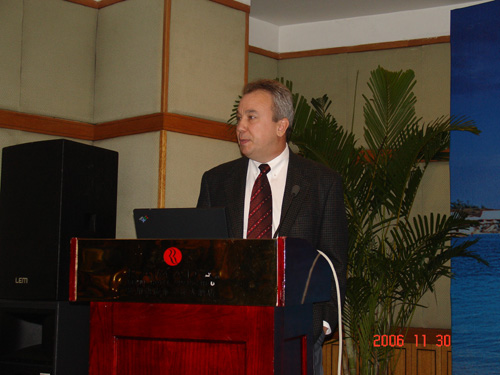|

REVIEW OF THE NOPP REAL-TIME FORECASTING SYSTEM FOR WINDS,
WAVES AND STORM TIDES OF TROPICAL CYCLONES
Scott C. HAGEN
University of Central
Florida, 4000 Central Florida Boulevard, Orlando, FL
32816-2450, USA
shagen@mail.ucf.edu
Hans C. GRABER1,
Vincent J. CARDONE2, Andrew T. COX2, Robert E. JENSEN3,
Donald N. SLINN4, and
Mark D. POWELL5
1University of Miami,
2Oceanweather, Inc., 3US Army Corps of Engineers,
4University of
Florida, 5Hurricane Research Division/AOML/NOAA
Abstract: In this paper we present the NOPP (National
Oceanographic Partnership Program) real time forecasting
system for winds, waves and storm tides due to tropical
cyclones. The NOPP real time forecasting system was
operating in a semi-operational mode during the 2004 & 2005
Hurricane seasons. On a six-hourly cycle threshold wind
radii and significant wave height plots along the official
National Hurricane Center forecast track were updated
routinely and accessible through an internal website. The
forecast system provided routinely wind fields every 30
minutes using high-resolution initial wind ^snapshots ̄ from
H*WIND. These winds were advanced in space and time for five
days along the official track and forced both a
third-generation wave model and a storm tide model.
Radiation stress fields were provided by the wave model and
coupled to produce storm tide predictions along the
coastline during landfalling hurricanes. The system is
presently implemented in semi- (for the majority of the
domain) and fully-operational (for portions of the domain)
mode during the 2006 Hurricane season.
Keywords: Real-time forecasting, wave modeling, tidal
modeling, surge modeling, tropical cyclones, hurricanes.
| 
